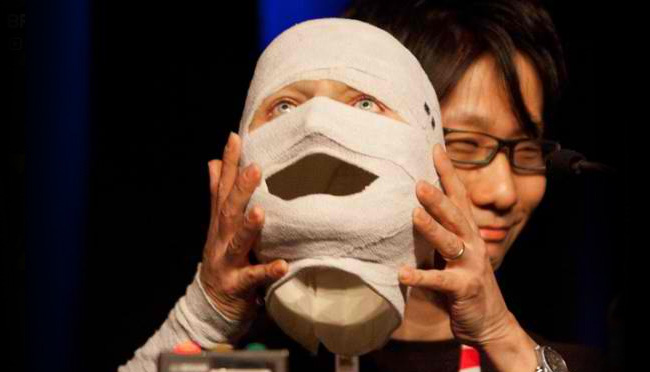Is Metal Gear Solid V secretly Hideo Kojima’s attempt to break away from the Metal Gear series? With so many major changes to the formula, Paolo Padayhag believes it might be the case.
The following is a guest article by Paolo Padayhag. Feel free to contact him with the information at the bottom of the article, if you have questions and comments. If you’d like to contribute something to META GEAR, email metagearsolid@gmail.com
Playing a Metal Gear game is an experience that is pretty much like the first time you had sex: it subverts expectations. No matter how you imagine it’s going to turn out, the reality will either be awesome or a massive let down.
The reason I’m writing this is because I believe Metal Gear Solid V is not a Metal Gear game, or at least, not the kind we expect it to be. In fact, I don’t consider The Phantom Pain a Metal Gear game at all. I see it as a completely different game that just so happened to be infused with Metal Gear DNA. It’s kind of like how Dark Souls was treated as a spiritual successor to Demon Souls. Of course, I won’t blame you for thinking this theory is ridiculous. I can’t help but feel that after years of being known only as the guy who made Metal Gear, it’s not hard to imagine that Hideo Kojima finally decided to say, ‘Screw it’ and went off to make a new game without telling us its not actually Metal Gear. And no, I’m not talking about that game.
How else can you possibly explain. . .
1) The Main Title
It’s no secret that Kojima has tried time and again to pass off the reigns of the series to someone else. Having spent half a century on earth, being the creator of Metal Gear and nothing else probably wasn’t the kind of legacy he wanted to leave behind. Sure, he had produced a lot of games since then but none of them match the scale and dedication he put into Metal Gear. In a time where video game companies want to branch out and tell exciting stories through new IPs, Kojima has cornered himself in the worst way imaginable.
Behind him is an extremely dedicated fan base that absolutely refuses to follow anyone other than him. Ahead of him lies an uncertain future and the lingering fear that he may be the only one who can get his ship across. With time bearing down on him, Kojima reveals the sword that could untie this Gordian Knot. If he must continue to make Metal Gear games, then he will tell the stories he wants to tell. Paradoxes will not deter him. If he must ruin his legacy in order to venture into uncharted territory, so be it.
Why do I believe this? Sometimes you have to look past the creator and simply look at the title:

Notice how the words ‘The Phantom Pain’ are presented? It looks absolutely nothing like Metal Gear. Had Moby Dick Studios been a real company, I wouldn’t be surprised if I was looking at a new IP.
This marketing stunt may have incurred the wrath of confused gamers everywhere but I believe Kojima had a goal. Metal Gear Solid V was hidden in the title not because it was disguised as a different game. Rather, the Phantom Pain is using Metal Gear as a medium to tell its own story.
How this logo was designed is another thing to consider. Since the series is riddled with continuity errors, I’m surprised how most people seem to ignore the logos were designed. We know Kojima is meticulous when it comes to details, so I don’t see why most of the games have different logos. If you were so eager to establish a seamless continuity, shouldn’t the logos deserve the same treatment? It’s the first thing you see when you buy a game! It’s on the damn cover!
In other words, branding is important. The only games that have any resemblance to one another are Sons of Liberty, Snake Eater, Peace Walker and, at one point, Ground Zeroes. Every other game in the series all had unique logos. What makes even less sense is that Ground Zeroes doesn’t even share the same logo with The Phantom Pain, despite it being the first half of Metal Gear Solid V. Given that The Phantom Pain was presented as a different game at the time of its announcement, I don’t blame Kojima for adopting two completely different designs. However, by E3 2014, he decided to stick with it:
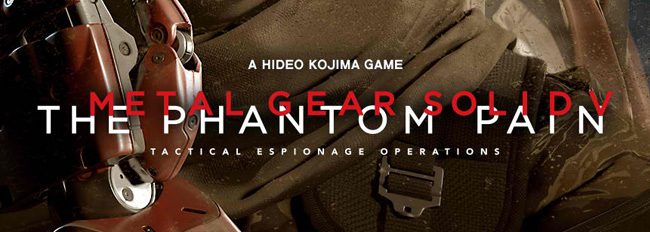
Another interesting point is why the title ‘The Phantom Pain’ was chosen in the first place. Phantom Pain refers to a medical condition that basically amounts to that feeling people have whenever they lose a part of their body. They think it’s still there, even if it’s no longer a part of them. Big Boss and Kaz are just some of the characters who suffer from this condition in the game. Furthermore, Kojima stated that the title refers not only to physical loss but emotional and psychological loss as well.
Furthermore, instead of an Arabic numeral that is normally used in the series, The Phantom Pain uses the Roman numeral for 5. This could stand for a lot of things, some of which you may already know after reading Alan Moore’s V for Vendetta. But for me, the reasoning behind this is far simpler: The Phantom Pain wants to stand out. It’s different and it’s telling me it’s not like the Metal Gear games I’ve played. It wants me to treat it as its own game.
Clearly, a lot of thought has put into the title. But I don’t think it’s merely used to refer to the medical condition alone. I think Kojima also intended to convey the message that we are no longer playing a Metal Gear game. We only think it’s Metal Gear because everything about it feels like a Metal Gear game, from the gameplay to the returning characters. It’s practically screaming ‘Snaaaaaaaaaaake’ in your face.
But this is merely an illusion. The title says it all. ‘The Phantom Pain’ appears alone as itself. It is only after a few seconds that we finally see the words ’Metal Gear Solid V’.
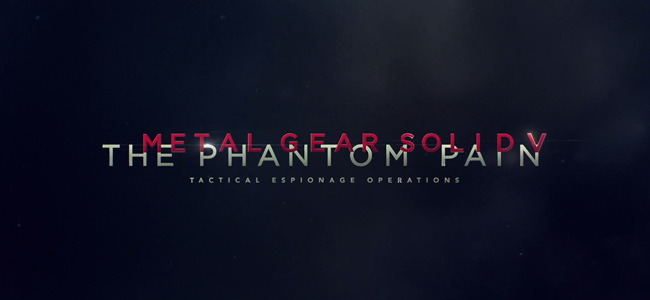
As an added touch, it slowly disappears, reminding us that this indeed is just an illusion. It’s our own Phantom Pain, if you will.
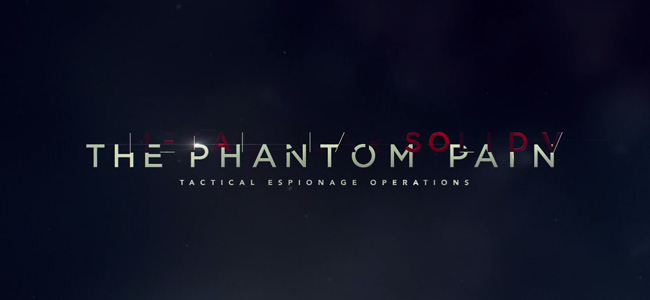
It’s genius really.
2) The Gameplay
I was pleasantly surprised to come across this article written by Ren Fujin. His review for Ground Zeroes was focused on gameplay, dissecting every single feature it had to offer. Alternatively, my editor, Mr. Wolfe, had his own thoughts. He analyzed the gameplay not in the context of its evolution from prior games but in the context of Ground Zeroes as a complete experience.
I too have my own thoughts with regards to gameplay. But instead of gameplay mechanics, I want to focus on what the gameplay means for the character of Big Boss.
There were a lot of gameplay features revealed at E3 2014. Some of them were absent in Ground Zeroes but will be present in The Phantom Pain. As I read stories of people who were amazed by the sight of seeing a sheep disappearing into the sky, I was reminded of a review I read a few years ago about Snake Eater. In the article, the author talked about how the gameplay was a dramatic shift from the one we were used to in Metal Gear Solid and Sons of Liberty. The core mechanics may have stayed the same but the overall feel is quite different.

With the inclusion of the CAMOUFLAGE, CURE and FOOD menus, Snake Eater was the first Metal Gear to include new gameplay mechanics. The setting of the story as well as the developer’s experience with the PS2 gave Snake Eater a distinct flavour. Hence, Snake Eater was a unique entry in the series and future games either simplified the gameplay or scrapped them all together. Guns of the Patriots adopted some of these mechanics while reinventing others. However, the way they were implemented in the game certainly gives us some insight into the character of Solid Snake, who until that point was never given a reason to use them.
In other words, Metal Gear, Metal Gear 2, Metal Gear Solid, Sons of Liberty and Guns of the Patriots have portrayed Solid Snake as a covert operative, an infiltrator along the lines of Sam Fisher. His most defining characteristic is that he often works alone. Even when he was a part of Philantrophy (where he worked with Otacon) or worked alongside Rat Patrol Team 01 (where he worked with Meryl), he still worked alone.
Big Boss, on the other hand, was less of an agent and more of a hunter, and the gameplay of Snake Eater reflected this. Of course, the game was quick to point out that Naked Snake (and by extention the player) was mostly suited to urban warfare and infiltration. However, as soon as the cutscene was over, it became clear to us that this Snake knew how to surive in a jungle. While you never had to worry about Solid Snake going hungry, Big Boss had to hunt for meals every now and then to sustain himself.
Peace Walker showed us another side of Big Boss that we would never have associated with Solid Snake. While you could play it alone, Peace Walker was designed to be played by several people. This was a particular point of interest in the gameplay trailers, which featured four players working together.
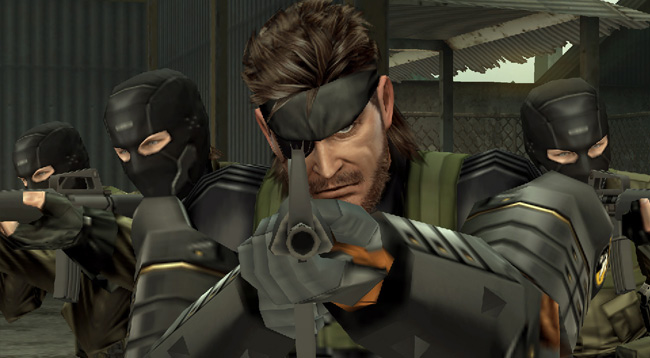
This tells us that Big Boss worked well in a team. In the past, players were used to dealing with seemingly impossible odds, working with limited equipment and without backup. Peace Walker took a different route where you can complete missions with your friends.
Big Boss also happened to be very charismatic. A feature in the game allows you to use the soldiers you captured to craft items and weapons for you to take into battle. Soon after, the player would discover soldiers lining up in order to join Big Boss’ cause.
Introducing these elements in Snake Eater and Peace Walker may be seen as a natural evolution for the series at first glace. But ultimately they would shape the kind of man Naked Snake would soon become.
3) The Story
Metal Gear has long been associated (and ridiculed) for its overly-complicated storylines. While the series is well known for its mythology, only dedicated fans will be able to discern the convoluted
plot threads that composes it. What most people don’t know is that while the series has had a lot of sequels since its inception in 1987, the games were meant to stand alone.
At the time, no one expected Metal Gear to be a hit. Metal Gear 2 (which was released three years after) owes its entire existence to a member of Snake’s Revenge’s development team being on the same train as Kojima. 1998 saw the debut of Metal Gear Solid, which was essentially a spiritual remake of Metal Gear 2 for the Playstation. Sons of Liberty, on the other hand, was essentially Metal Gear Solid on steroids. Snake Eater, for its part, was set prior to these games and the events that took place hardly affected the storyline.
In other words, the games are set in the same universe but their individual storylines can stand alone. Whenever Kojima sits down to write a story for Metal Gear, he does so without foreseeing the repercussions it might have on a sequel if it were made. He also admitted that in writing the narrative for Metal Gear Solid V, he knew he would have to retcon a lot of things if he wanted the entire series to have a cohesive storyline. This brilliant article by SolidKenny basically summed it up when he mentioned that Kojima cared more about ‘thematic canon’ than ‘factual canon’.
So what does this tell us about The Phantom Pain? As it currently stands between Ground Zeroes and Metal Gear, it is now left with a few decades at best to fill in the remaining gaps in the story. It was basically Metal Gear Solid: Rising before it was cancelled.
However, I must point out that the story all began with Snake Eater. As I have mentioned earlier, it does nothing to directly affect the events that occured in past games. In other words, Snake Eater was pretty much a fresh start for the series, providing a blank canvas for Kojima to create a completely new story. Although it wasn’t apparent to Kojima then, the existence of Portable Ops had proven that unless the story was willing to create more inconsistencies, filling in the blanks was pretty much the only course you could take.
In fact, the existence of Portable Ops necessitated the creation of Peace Walker, which is similar to how Snake’s Revenge led to the development of Metal Gear 2. Both instances have shown that unless a Metal Gear game was made under the direct supervision of Kojima, the universe will continue to screw him over until he makes a true sequel. In other words, he was willing to butcher the storyline if it meant he was holding the knife.
Peace Walker further alludes to this by having us ask ‘What happens next?’ instead of ‘What happened next?’ This small change would be the catalyst for an alternate reality that would dramatically affect the entire series.
I mean, how else can you possibly explain the existence of A.I. weapons in middle of 1974? These machines could seriously give REX and RAY a run for their money. The only way to justify their existence is if REX and RAY were completely redesigned to be superior, character flaws be damned. And while we’re on the subject, if the US government had this kind of money back in 1974, which they used to fund the development of four different Metal Gear-type machines, alongside the deployment of a seemingly infinite number of tanks and helicopters as well as recruiting hundreds if not thousands of soldiers, why the hell were they left with a shoestring budget for REX and RAY? Was it all spent on Arsenal Gear?
My point here is that the story of The Phantom Pain can only move forward with what had already been established in Peace Walker, not backward. Say what you will about Portable Ops, but at least RAXA seemed like a natural progression from the Shagohod before they came up with TX-55.
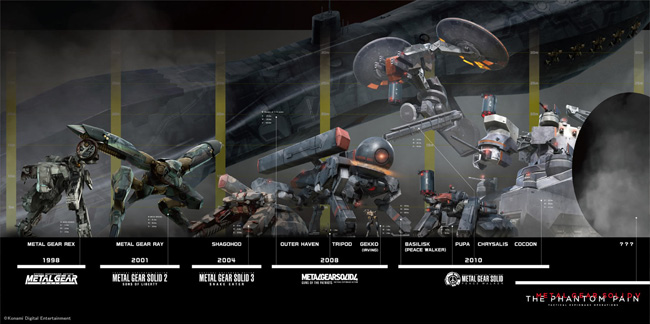
4) The Voice
Metal Gear fans around the world were shocked when it was announced that David Hayter, the iconic voice of Solid Snake, would not reprise the role for Metal Gear Solid V. This was after months of speculation, with Hayter as clueless as us with regards to his uncertain fate.
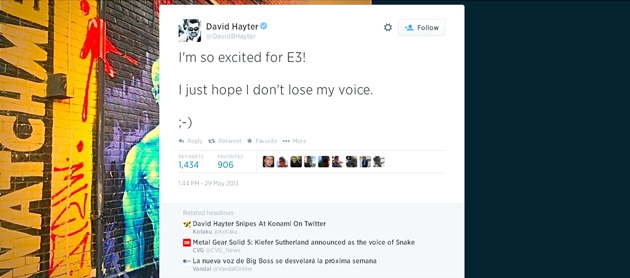
When it was finally revealed that Kiefer Sutherland would take on the reigns of gaming’s quintessential covert operative, reception was decidedly mixed. Some were intrigued by the idea of having an experienced actor give his own interpretation of the legendary mercenary, having turned in a critically-acclaimed performance for his portrayal of Jack Bauer in 24. Others were not so forgiving, believing that no one could possibly fill in the shoes left by Hayter’s distinct voice acting. While Kojima was more than willing to provide an explanation for this decision, the fans, in their frighteningly-religious dedication to the series, had their own ideas, with some believing that this was all part of some insane conspiracy theory.
Whatever the case, I want to focus on something else. I believe that it’s not necessarily Hayter’s unceremonious replacement or Kiefer’s selection that actually matters. In fact, an argument can be made that anyone could have taken assumed the voice of Snake so as long as Hayter himself was replaced. I believe that the reason for this has less to do with Big Boss’ portrayal and more about the status of Hayter as a cultural icon. Ever since his introduction in 1998, Solid Snake has become one of the most recognizable faces in gaming, standing alongside key figures such as Lara Croft and Mario. That esteemed reputation has long been associated with Hayter, whose portrayal of the world-weary hero with a voice that could part a woman’s legs was overwhelmingly well-received.
But there in lies the problem. Kojima knew that by having Hayter reprise the role of Snake, he would have to work with Hayter’s portrayal of the character, who has achieved a cultural status not unlike Kevin Conroy’s iconic take on Batman. Because we have long associated the character of Snake with Hayter, we would hold the preconceived notion that we were just playing another Metal Gear game.
Furthermore, Hayter’s interpretation of Snake warrants a closer look. Solid Snake is portrayed as a man of action not unlike James Bond (who is one of the characters he’s based on). While they have distinct methods in completing their missions, they still share similar traits. Both are highly-skilled operatives with a penchant for hitting on women. They are often tasked with stopping dangerous terrorist cells and are both used as expendable pawns by their own government. They both have a dedicated support teams and prefer to work alone.
If we are to accept Hayter’s portrayal of the eponymous spec ops agent, we are left with a man who is hardened veteran who barely talks, a loner who does not take orders willingly. Hayter’s Snake is living under the delusion that he is not the killer his enemies make him out to be. If we are to take everything at face value, it’s fair to conclude that he can also effectively portray Big Boss. This wasn’t a problem in Snake Eater, as Naked Snake was made to look like Solid Snake in every way.
However, by the end of the game, Naked Snake would embark on a different path. Unlike the man who would soon inherit his codename, Big Boss is a captivating figure, surrounding himself with trusted allies like Kaz and Ocelot. At one point in the E3 2013 trailer, he willingly admitted that he was already a demon. It’s also worth noting that he refuses to be compared to James Bond.
Peace Walker further alludes to this by having Naked Snake evolve into a charismatic leader in charge of his own mercenary group. Solid Snake may have been a clone but nothing in his characterization suggests that he would follow in his father’s footsteps. To take a cue from Bioshock, Solid Snake was the kind of man, willing or not, who obeyed orders while Big Boss was ultimately portrated as a legend who made his own choices.

By having Big Boss symbolically shed his skin, Kojima made it clear that Naked Snake had undergone a spiritual transformation. Throwing the bandanna away serves not only to show that Big Boss had finally stepped out of the Boss’ shadow but is also a way of showing that the Snake we have come to know is gone. Having Hayter return would only serve to undo the dramatic recreation of Big Boss and there Kojima is justified for having replaced him.
The casting of Kiefer, on the other hand, is a similar matter. Having him ensures that this new interpretation will be a fresh start for the character as well as the series. A less-experienced voice actor would have been crushed by such a burden. By having Jack Bauer himself assume the mantle of Big Boss, public backlash would be minimal, with some embracing the idea of a new direction for the series.
5) The Themes
Pay close attention to the themes Kojima used. For Metal Gear Solid, it was GENE. For Sons of Liberty, it was MEME. For Snake Eater, it was SCENE. These compose the thematic structure of the trilogy Kojima had envisioned. Besides being phonetically similar, they represent the idea that who we are and what we become are strongly affected by internal and external forces. Guns of the Patriots seals this notion with SENSE, or the idea that some things cannot be passed on.
However, by the time Peace Walker was released, the theme was no longer about stimuli. With PEACE, it became clear to me that Kojima was no longer focusing on ‘thematic canon’. Instead of having the theme control the story, Peace Walker was the first game in the series to be ’character- driven’. In other words, the story that began with Snake Eater served as the foundation to tell the tragedy of Big Boss.
During the events of Operation: Snake Eater, the United States and the Soviet Union were in the middle of the Cold War. In between those two superpowers were two people. One was a decorated war hero and the other was her beloved disciple.
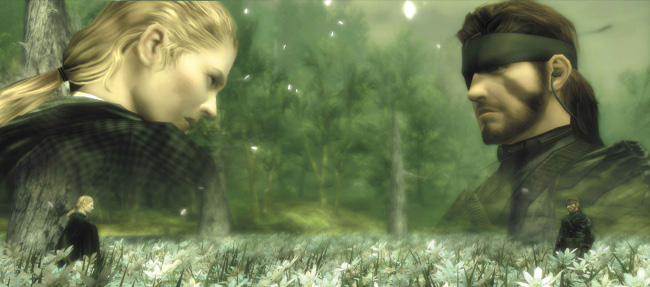
Standing on opposite sides, one was destined to fall at the hands of the other. By having Naked Snake take the life of The Boss, Snake Eater did the one thing that Sons of Liberty never could: to make us care.
The relationship between Naked Snake and The Boss is what defined the Snake Eater experience. We felt the pain of our mentor’s betrayal. The game (through EVA) even asks the player if he or she is capable of killing the Boss. In fact, the game won’t end unless you pull the trigger.

That was depressing. Holy shit.
By the time we got to Peace Walker, Big Boss had already forsaken his country and left everything behind him. In that time, he would form Militaires Sans Frontières, Outer Heaven’s predecessor. At this point, Big Boss struggled to find a purpose. For a man who has known nothing but conflict, he sought to justify his existence in the only way he knew how: to be a mercenary. By establishing MSF, he believed he was carrying out The Boss’ legacy. The theme of PEACE strongly resonates within Peace Walker not only by shoehorning the word ‘peace’ at every possible moment but also by having Big Boss come into terms with his destiny. In effect, he had started on the path that would ultimately turn him into the monster we have come to know.
So what does this tell us about The Phantom Pain? According to Kojima, the themes are RACE and REVENGE. Like Peace Walker before it, it also focuses on the growth of Big Boss as a character. However, this time the transformation is far more dramatic. And much like his protagonist, I believe Kojima too has admitted that he is already a demon. He wishes to exact his vengeance for being unable to forsake his own destiny as the architect of the series. By leaving the past behind him, Kojima was free to take any path he desired.
Unlike the man who so closely associated himself with Solid Snake, Kojima was determined to venture into new horizons. If he must tackle sensitive issues in the process of murdering the canon, then so be it.
6) The Prologue
Ground Zeroes is an interesting title.
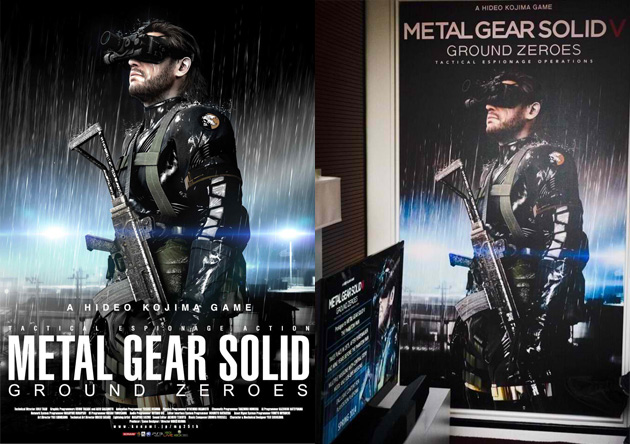
It’s definitely a part of Metal Gear Solid V. Furthermore, it takes place after the events of Peace Walker. But a closer look at the story will tell you that save for a few returning characters and setting up the events for The Phantom Pain, Ground Zeroes is mostly an isolated incident. In fact, you can argue that its existence is largely irrelevant to the series’ mythology. Apart from Paz’s gruesome torture, who would even remember what happened here? Would you be surprised if there was a short summary included in The Phantom Pain detailing the events that occured in Ground Zeroes? Even when Metal Gear Solid included summaries for Metal Gear and Metal Gear 2, there was no reason for you to read any of them since they didn’t directly affect the story apart from providing footnotes.
Without mincing words, it is indeed an overly-hyped demo and a glorified marketing disaster. Hayter himself was not so forgiving:
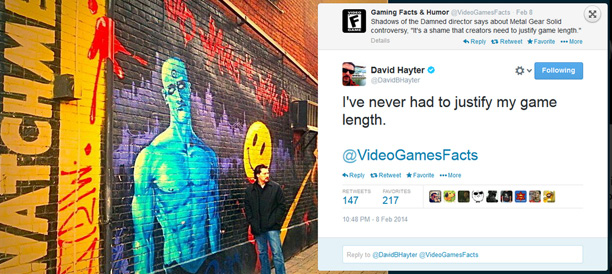
Ground Zeroes is without a doubt a commercially successful clusterfuck of epic proportions.
Let’s take a step back and consider this for a moment. For some reason, the folks at Konami had no problem with going through with this insane idea. While the rest of the world was in absolute awe of the Fox Engine, a bunch of marketing executives were probably wondering how the fuck they were going to sell a game that hardly had any gameplay in it.
It’s important to point out that Kojima doesn’t seem like the kind of person who’d risk putting a game out because of a deadline. The Phantom Pain is currently in a state of perpetual development. Apparently, Kojima was in the midst of polishing the game, which may or may not have something to do with Grand Theft Auto V. After all, this is Kojima’s latest masterpiece (which may or may not be his last game). He wants to go out with a bang. The decision to release Ground Zeroes early does not only contradict this statement but it also doesn’t make any sense.
What makes this decision even more perplexing has a lot to do with the story. Most people weren’t impressed with the game’s execution of a sensitive subject matter. Personally, I believe the story simply suffered because Ground Zeroes was released separately. Had it been integrated into The Phantom Pain as originally planned, we probably would have been shocked for different reasons.
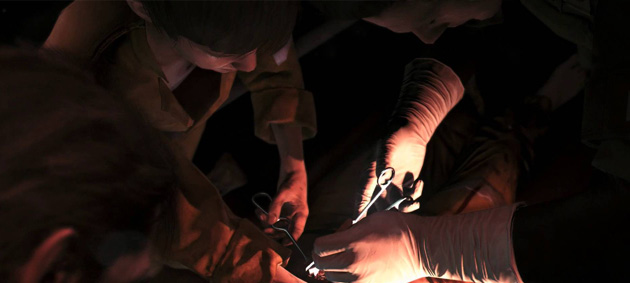
Can you imagine experiencing something like this that early in the game? Since we spent so much time focusing on that particular part, we ended up criticizing it without context. We have no idea how The Phantom Pain would have approached the aftermath of Ground Zeroes and so it really is nothing more than pure shock value. This was a mistake we would never have imagined Kojima was capable of committing.
Or was this the intention all along? If Kojima had the balls to mastermind a marketing strategy that necessitated the creation of a fake studio for the sole purpose of advertising the Fox Engine, then he was pretty much capable of anything.
Deadlines were probably not an issue for him. When the development of the PS3 was taking too long, he went ahead and made Snake Eater for the PS2. In that instance, however, it was a complete game, not the blatant cash-grab that Ground Zeroes appears to be. This tells us that Kojima had no qualms about making a new game even if the platform wasn’t ready yet.
This is, without a doubt, the second most pretentious advertisement ever made for a video game. To put this into context, the marketing campaign for Silent Hills was pure genius. Konami’s other iconic franchise had basically been left for dead after the original team left the series. Now, with the Fox Engine and Guillermo Del Toro, even the most jaded Silent Hill fan was paying attention. My point here is this: if Kojima can raise Silent Hill back from the edge of the grave, then he should have been capable of doing something similar for Ground Zeroes.
In other words, Ground Zeroes was not an accident, at least for me.
So what is the true reason for releasing the game early? The answer lies somewhere between necessity and pure luck. Perhaps under pressure from shareholders, Kojima realized that in order to save the ‘body’, he needed to cut off the ‘arm’. He had no intention of being left behind when the rest of the industry continued to churn out triple AAA games like clockwork. This would explain why Ground Zeroes looked like it had a lot more features built into it but were removed at the last minute. Kojima was preparing to blow the competition away with The Phantom Pain and he decided that by folding now he could win the pot later.
The decision to split Metal Gear Solid V, therefore, brought upon a silver lining. It would allow Kojima to get some feedback from players which he could use to improve the experience of The Phantom Pain. In other words, Ground Zeroes wasn’t just a glorified demo but the most ambitious beta test ever made. This would also insure that Metal Gear Solid V would stay fresh for a couple more months and would allow the anticipation for The Phantom Pain to grow.
But there is a third, more subtle reason for all of this. Kojima was quietly stepping away from Metal Gear. The appeal of the series is built on nostalgia and themes. With the advent of Peace Walker, a new timeline emerged. In essence, The Phantom Pain would be Kojima’s Dark Souls. This is why he sees a lot of himself in Big Boss. The allegory is there.
One way to prove this point is to look how the subtitles have been presented thus far. After months of speculation as to whether Ground Zeroes and The Phantom Pain were the same game, Kojima lifted the veil and revealed that they were two halves of the same story. While both games are under the banner of Metal Gear Solid V, providing two different names for both of them forced us to treat them as separate games. Hell, Punished Snake somehow managed to turn into Venom Snake.
When Ground Zeroes was set to be released, we called it ‘Metal Gear Solid V: Ground Zeroes’ or simply ‘Ground Zeroes’. When it was greeted with a lot of negative reception, all fingers were pointed at Ground Zeroes but not Metal Gear Solid V. In effect, Kojima had successfuly diverted the attention away from The Phantom Pain, which is the true Metal Gear Solid V experience. This move is the final step in Kojima’s transformation. If successful, he will not only reinvent the series but also himself in the process.
For better or worse, Ground Zeroes has served its intended purpose, whatever that purpose may be. The anticipation for The Phantom Pain is at a fever-pitch. Only time could tell if Kojima would be able to accomplish the monumental task of delivering on all ends.
7) The Player
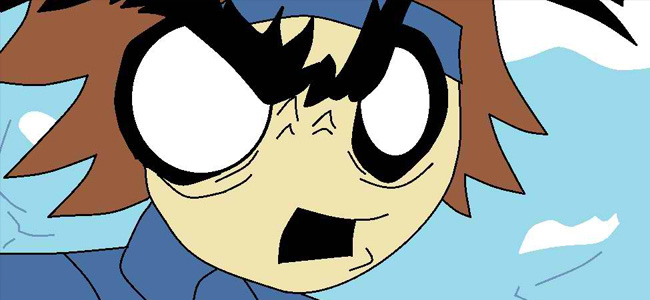
By far the greatest indication of this theory’s probability are the players themselves. While it’s not unheard for fans to create their own theories regarding their favourite games, Metal Gear is arguably filled to the brim with the most ridiculous ones.
The most insane theory that I came upon was how Quiet was the result of a mentally-damaged
Chico going under the knife:

While there have been a lot of questionable (read: stupid) plot twists in the past, what makes this theory so absurd is the fact it could possibly be true. But the fact that Chico suddenly got breasts isn’t even the most interesting part.
The fact that a series as renowned as Metal Gear would evoke this kind of dedication is a testament to Kojima’s brilliance. Ever since Sons of Liberty, fans have every right to be anxious. They have come to expect that things aren’t always as they seem. Kojima had always been one step ahead of everyone. It’s no surprise that they are trying to catch up.
Take me for example. I believe Peace Walker was Kojima’s first step outside of his comfort zone. In effect, a lot of the details in the story contradict the events that happened in the established history. On top of that, some of the characters that were included had no bearing on the plot at all.
The best example of this argument is Cécile Cosima Caminades.
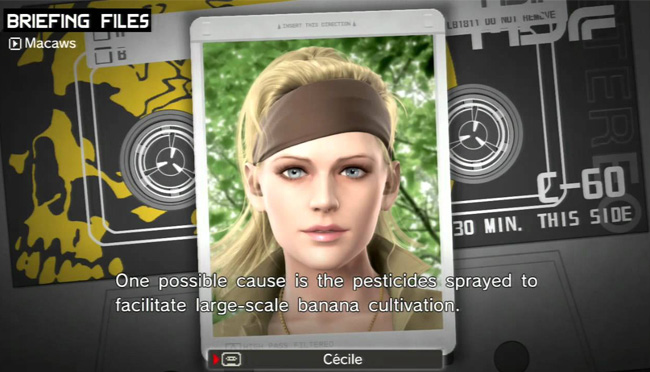
Apart from helping Big Boss look for a fucking bird, she played no integral role in the story apart from staying in the kitchen and being a victim of sexual harassment, which is probably the most sexist sentence I have ever written. Her inclusion in the game doesn’t make any sense apart from pure fan service.
It is important to point out that there are four main female characters in Peace Walker, but three of them plays a crucial part in the story. Dr. Strangelove was there because of her role in the development of the Mammal Pod as well as her relationship with The Boss. Amanda was there because she was a member (and eventually the leader) of the Sandinista National Liberation Front. Paz was there because she was the one who set the events of Peace Walker into motion. Cecile, on the other hand, was just kind of there. By the time we got to Ground Zeroes, her role in the series became indefinite due to some throwaway line about evacuating Mother Base.
Because of this, I seriously wonder why Kojima would want to invest in the introduction of a character who would ultimately serve no purpose in future titles. With Guns of the Patriots, Kojima managed to shoehorn every single character he had created at that point into the story. Some of them even belong in different games. Hell, even the joke character from Metal Gear Solid somehow manages to get the girl. In other words, whenever Kojima introduces a character, he or she has an important part to play in the story. In some cases, he would even reinvent them.
The point I’m trying to make here is that most of the characters introduced in Peace Walker have little to no bearing in future titles.
Unless they made make a surprise appearance in The Phantom Pain. The Boss’ voice actress very much implied that she may have a role in the game. Some of you are probably wondering what happened to Para-Medic and SIGINT after Big Boss’ inauguration. I would love to see Amanda back too, since it doesn’t make sense for her to leave her brother behind. An appearance from Dr. Strangelove would be welcome as well. And it probably wouldn’t hurt to see EVA’s boobs in glorious HD.
All kidding aside, these are all just theories at this point. They could be true. I could be wrong. Which makes the guessing all the more exciting. Once we are ready to accept that this is that start of a brand new era in Metal Gear, it’s easier to accept that almost anything could happen. For all we know, Portable Ops was canon after all and that Gene is probably Skull Face. With all the Monster Hunter references, I wouldn’t be surprised if Chico turned into Grey Fox. Hell, Amanda could even be Meryl’s mother. The possibilities are endless. And here I am still hoping that New Coke theory actually has some merit in it.
